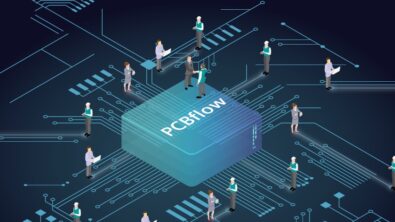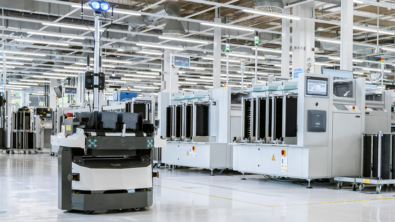The future of digitalization: On-premises vs. cloud

Recently Tosh Tambe, VP, Cloud Strategy and Transformation and Chad Jackson, Chief Analyst and CEO of Lifecycle Insights, had a conversation regarding Xcelerator as a Service and what it means for digital transformation.
This three-part series highlights their conversation and thoughts on the future of digitalization.
Read Part 1: The future of digitalization: A world of complexity
Part 2: On-premises vs. Cloud
The benefits of a cloud-based architecture versus an on-premises one are monumental. We understand that it’s easy to simply state the benefits and it’s much harder for a company to actually go through the investment of changing the way the company designs and engineers its products. But as we continue to enter an increasingly digital future, investing in cloud computing software will not just be a better option, it will be the best way to compete.
What are the basic differences between on-premises and a cloud platform architecture?
Typically on-premises architecture features an application-centric world, rather than a data-centric world. Even with a PLM system on a server or an on-premises data center, the reality is that every individual user has application centric access to the technology. This means, in the best-case scenario, the user has an installed application on their desktop and they fetch data from wherever the data lies, work on that data, and then push that data back.
That’s the best-case. Oftentimes users have an application centric view with data islands. This unintended isolation causes massive data management headaches. The data is locked into locally installed applications where it is brought in and sent out from it.
On the cloud architecture, users operate in a data centric environment. The single source of truth is the data, which is centrally maintained. Each user comes in through a browser window — an application that they can access on any device through a browser — and they’re operating with a set of tools and approaching the data from a certain perspective.
With cloud, the connectedness is more inherent and natural than on premises, which is more about working in files. Unstructured databases, like those used in cloud computing software, is the end goal. Yet, it doesn’t stop there.
Manufacturing companies can have the data structure and files on a cloud-based system with access management creating a controlled single source of truth type of data access without fundamentally changing the data architecture. They can have several different domains with different schemas all interacting and working together.
Overall, having the file structured data on the cloud with the right access management simplifies the problem of data management substantially.
Openness and cloud in the ecosystem
Another point to consider is sharing data back-and-forth with the supply chain. This is a different problem as even with on-premises data centers that might look something like the cloud, there’s an issue with access because the data is isolated and behind a firewall. This bears the question of how much access does a company give and how its impacting the design and engineering of the product.
And then companies even design around that problem by basically stripping out all the IP so the supply chain works with a shell of a design. Still, the main problem is that data needs to move from one on-premises machine to another on-premises machine. The different users might not be in the same trust circles creating layer-after-layer of burdens that can affect the project and turn into costly redesigns.
Through access management on the cloud, the users come and go as needed, IP is managed much better, data is not moving around anywhere and activity can be tracked.
Fluidity across functional departments
The reality of today, which the pandemic accelerated, is there will be more and more remote workers, especially in terms of evolving work/life balance and the perks that companies offer to their employees to both work more efficiently and as a recruiting tool to attract the best talent.
Along with remote working is the reality of the gig worker — there is much more contract labor than ever before, including expert gig workers. The need to support both employees working remotely as well as a workforce that has an increasingly greater composition of contract-based labor, is extremely important.
This ultimately means that a variety of teams are doing the same function or similar functions around a project. Even if the data access issue can be resolved, it still requires manipulation of that data conversion. A product design team and a tooling engineering team working together might use similar design tools, but there will be some confusion. A team of industrial engineers and simulation analysts can complicate the whole process.
Another issue is working on a standard form of data and how burdensome the transitions of moving from one on premises application to another on premises application can be.
The digital future
Xcelerator as a Service (XaaS) is your all access pass to digital transformation and proves anything is possible with ongoing value via connection to the cloud and the power of the world’s most comprehensive digital twin.
XaaS frees designers and engineers to innovate without limits and provides the full benefits of cloud capabilities ensuring access and on-demand functionality anywhere, anytime, from any device. Itopens the ecosystem for better collaboration and more effective product design and engineering.
The digital future starts with XaaS.
The digital future starts now.
Learn more about Xcelerator as a Service:
Xcelerator Blogs:
- Northrop Grumman collaborates with Siemens to further humanity’s reach for the stars
- Addressing today’s industrial sustainability challenges with digital software
- Siemens Xcelerator and NVIDIA Omniverse enable the industrial metaverse
- Digital transformation and the digital thread spike innovation for the A&D industry
- Hymer pioneers its innovative and sustainable Venture S concept RV using Siemens Xcelerator software


